We’re drowning in “must-read” documents. 80-page compliance manuals. Endless onboarding PDFs. Research hiding one useful paragraph in the middle of a huge wall of text.
Enter: artificial intelligence (AI) summarizer tools. They pull out what matters, reduce the bloat, and format it into something your brain can actually use — bullets, highlights, and TL;DRs.
I tested the best tools for web pages, research articles, PDFs, and videos — so you don’t have to.
The 8 best AI summarizer tools
You’re probably thinking, “Why can’t I just use ChatGPT or Claude?” If you want more than a basic text dump without constant prompting, dedicated AI summarizers are often your best bet.
That’s why I put together this list:
Top AI summarizer tools
- Jotform AI PDF Summarizer: Best for summarizing long PDFs.
- QuillBot AI Summarizer: Best for flexible-format summaries of general content.
- TLDR This: Best for quick article and blog post summaries from any URL.
- Wordtune Summarizer: Best for detailed breakdowns of long-form content.
- SciSummary: Best for summarizing academic research and science papers.
- Recall: Best for building a “second brain” from summarized content.
- Glasp: Best for saving, highlighting, and summarizing web content.
- Summarizer.org: Best for free, multi-language summarization across formats.
How this list was tested and selected
To find the best AI summarizers that do the job, I tested more than 20 tools using the kinds of content you’d actually want to shorten: dense PDFs, academic papers, onboarding docs, long-form articles, trend reports, and messy web pages full of ads. Real-world stuff — not just clean blog posts.
I also trawled community threads on Reddit and Quora to get real user feedback.
✅ Finally, I stress-tested the AI summarizers against four key qualifying questions:
| My big question | What I looked for |
|---|---|
| 1. Does the summary make sense? | Not just shorter — I needed summaries that were clear, logical, and actually helped me get the point. |
| 2. Can I control the output? | Could I get quick bullets, a snappy TL;DR, or choose if the summary is short, medium, or long? Tools that let me decide won. |
| 3. What kinds of inputs does it support — and does it work well with them? | I threw in PDFs, web links, complex academic papers, and plain pasted text. Then, I checked if it just processed them or actually summarized them well. |
| 4. Is it easy to use? | I needed tools that felt intuitive and straightforward. No confusing menus or making me jump through hoops for a simple summary. |
❌ I cut any tool that just truncated content, missed the main point, or hid basic features behind a paywall.
8 best AI summarizers in 2025: A quick comparison
| Tool | Best for | Summary type | Input method | Plans/pricing (billed annually) |
|---|---|---|---|---|
| Jotform AI PDF Summarizer | Automated PDF analysis | Key points, paragraph | Upload PDF | Free version; usage limits based on account type |
| QuillBot AI Summarizer | Adjustable text summaries | Bullets, paragraph, custom | Paste text, upload document (.doc, .txt, .pdf) | Free version (1,200 words); paid plans from $8.33 per month |
| TLDR This | Ultra-concise web summaries | TL;DR, key sentences, detailed | URL, paste text, browser extensions (Chrome, Firefox) | Free version; paid plans from $4 per month |
| Wordtune Summarizer | Detailed long-form breakdowns (text, video) | Highlights, interactive, searchable | Paste text, upload PDF, URL (articles, YouTube videos) | Free version (three summaries per month); paid plans from $6.99 per month |
| SciSummary | Academic and science papers | Sectional, key points, chat | Upload PDF, paste text, URL | Free version (10,000 words per month); paid plans from $4.99 per month or pay per doc |
| Recall | Building knowledge base from summaries | Bullets, chat, quizzes | URL (YouTube, articles), upload PDF | Free version (10 summaries); paid plan costs $7 per month |
| Glasp | Social highlighting and summaries (web, PDF, video) | From highlights, YouTube | Browser extension (Chrome, Safari) for web and PDF highlighting, YouTube URL | Free version (for public content); paid plans from $10 per month |
| Summarizer.org | Free multi-language summaries | Paragraph, bullets, best line | Paste text, upload document (.pdf, .doc, .docx, .txt) | Free version; paid plans from $4 per month |
The 8 best AI summarizers in 2025
I dug into each tool’s strengths, limitations, and ideal use cases — so you can pick the one that fits your workflow.
1. Jotform AI PDF Summarizer: Best for summarizing long PDFs
Yes, Jotform AI PDF Summarizer is our baby, but we put it through the same tests as every other tool on the list. It’s here because it does what most summarizers struggle with: making sense of long, dense PDFs without freezing, failing, or demanding a login first.
Pros:
- No account required: You can upload or drag and drop, and summarize a PDF in seconds — zero hoops to jump through.
- Clean, readable results: Whether you pick bullets or a paragraph, the summary is clear, well-structured, and actually useful.
- Flexible controls: Want more detail? Less? You can extend or shorten the summary, or regenerate it entirely.
Cons:
- PDFs only: If you’re looking to summarize a webpage or pasted text, this isn’t your tool.
- No export-to-file option: You can copy the summary, but there’s no one-click download (yet).
If PDFs are part of your world, Jotform AI PDF Summarizer makes understanding them a whole lot quicker and easier. And it works especially well for the kinds of documents most people avoid reading in full — think onboarding guides, financial plans, academic papers, and annual reports.
The tool shines when you build it into your real work. As a freelance content marketer, I go through a ton of contracts with clients. Frankly, I don’t have a lawyer on retainer to proofread all of them, so I feed them into Jotform AI PDF Summarizer and skim the summary to see if any clauses ring alarm bells.
Here’s how it works:
- Upload your file — whether from your device, Google Drive, or Dropbox; or simply drag and drop.
- Jotform’s AI analyzes the content to produce a concise summary highlighting the key information in seconds.
- Extend or shorten the length, or regenerate a fresh version if the first one doesn’t hit quite right.
That’s it — it really is that easy.
The clean web-based interface highlights only the three actions that matter: upload, generate, and modify. Plus, it’s just one of many PDF tools Jotform offers as part of its PDF Editor ecosystem, giving you a full suite of options for all your document challenges.
Pro Tip
Love how Jotform AI simplifies PDFs? That’s just the start. Explore Jotform AI Agents to automatically process documents, respond to content, and handle workflows without lifting a finger. Perfect if you’re drowning in paperwork and thinking “there must be a better way.”
✅ Choose Jotform AI PDF Summarizer if: You regularly work with long, structured PDFs and want a no-fuss way to get the key points.
❌ Skip it if: You need to summarize something outside the PDF universe.
💸 Jotform AI PDF Summarizer pricing:
- Free: One summary per hour for guests; five per hour for free accounts.
- Bronze, Silver, or Gold Plan: Run up to 50 summaries per hour.
2. QuillBot AI Summarizer: Best for flexible-format summaries of general content
QuillBot is well known for AI writing help, and its Summarizer tool is a solid companion. You can paste in text, adjust the length, and choose between three modes: Paragraph, Bullet Points, and Custom. Upload your content or copy-paste text directly into the AI summarizer. Then, export the summary as a PDF or copy-paste it.
Pros:
- Adjustable length: Choose how short or detailed you want the output using a sliding scale.
- Good for everyday content: Works well on general web articles, internal docs, and marketing copy.
Cons:
- Best features are locked in the Premium Plan: More advanced summarization capabilities, higher word limits (up to 6,000 words), and faster processing speeds require a paid subscription.
- Can oversimplify complex text: While generally good, for very nuanced or highly technical documents, the summaries might sometimes miss some subtlety or depth.
I fed QuillBot AI Summarizer part of a long-winded McKinsey report, and the summary seemed to miss important statistics that anchored the report, instead focusing on buzzwords.
The user experience (UX) is mostly straightforward; I found the sidebar on the left a little distracting, though. If you’re a power user, you’ll hit your limit (both words-wise and quality-wise) within a few minutes on the free plan.
And that’s my main gripe with the tool — I can only feed it 1,200 words with a signed-in account on the free plan. Honestly, if I’m looking to summarize something, it’s definitely a lot longer than that limit.
✅ Choose QuillBot AI Summarizer if: You already use QuillBot’s other tools.
❌ Skip it if: You need to summarize large files or high volumes without bumping into word caps or paywalls.
💸 QuillBot AI Summarizer pricing:
- Free Plan: Summarize up to 1,200 words at a time. Paraphraser has a 125-word limit. Includes standard modes for the paraphraser.
- Premium Plan: Starts at $19.95 per month or $99.95 per year ($8.33 per month). Bumps your limit to 6,000 words and unlocks the full toolset across the QuillBot suite.
3. TLDR This: Best for quick article and blog post summaries from any URL
If you’ve ever wished for a magic button to instantly tell you what a long web article is actually about, TLDR This is pretty much that button. Its name says it all — it’s built to give you the “too long; didn’t read” version.
Pros:
- Excellent for URLs: Just paste in a link to an article or blog post, and it gets to work. This is its unique selling point.
- Offers browser extensions: Handy extensions for Chrome and Firefox, letting you summarize any webpage with a single click without leaving the page. Super convenient.
- Clean reading experience: Often presents summaries in a clean interface, stripping away ads and other webpage clutter from the original source.
Cons:
- Not great for PDFs: While it technically accepts PDF uploads, the results aren’t as strong as with web articles. A dedicated PDF summarizer like the Jotform AI PDF Summarizer would be better suited.
- Can miss nuance: Sometimes oversimplifies complex arguments or overlooks important context in opinion pieces.
- Longer articles take minutes, not seconds to process: The tool can choke when it’s fed a text of over 6,000 words.
TLDR This is great for content skimmers. And the interface supports that with its ChatGPT-like feel. You have three options to input your text: upload, enter a URL, or simply copy-paste. The export options are limited to copy-paste.
I tried two different content types with this tool: a regular 1,500-word Forbes article and a lengthy blog post I wrote of almost 6,000 words.
The first one came through with no hiccups. A great feature is its ability to pull important questions from the article within the summary that you can then click to give you more focused answers.
But for my long article? It choked. I gave it seven full minutes — loading circle, no summary.
✅ Choose TLDR This if: You just want a clean, readable summary of an article or blog post — fast.
❌ Skip it if: You’re summarizing PDFs, academic research, or anything longer than a standard article.
💸 TLDR This pricing:
- Free: Unlimited basic summaries (key sentences), but only 10 advanced AI summaries and 10 paraphrases (one-time).
- Starter: $4 per month for 100 advanced AI summaries and 100 paraphrases monthly.
- Professional: $8.25 per month for 500 advanced summaries and 500 paraphrases monthly, plus priority support.
- Business: $16.60 per month for unlimited advanced summaries and 1,000 paraphrases monthly.
4. Wordtune Summarizer: Best for detailed breakdowns of long-form content
If you want to truly understand something quickly, Wordtune Summarizer (found within its “Wordtune Read” application) offers a more in-depth approach. Drop in long-form content (text, URLs, PDFs), and it gives you structured bullet points with traceable sources or paragraph summaries.
Pros:
- Interactive side-by-side view: Presents summaries and notes in one pane while displaying your original document (PDF, webpage) in an adjacent pane.
- “Spotlight” and semantic search: Goes beyond basic summaries by allowing you to ask specific questions about the document or search for concepts within your uploaded content.
Cons:
- Free plan is quite limited: You’ll likely hit the usage cap on the free tier quickly if you’re summarizing documents regularly.
- More geared towards deep work: If you just need an instant TL;DR without any interaction, its feature set might feel like overkill for that specific quick task.
The article summarizer gives you three input options: upload your content, enter a URL (even for YouTube videos!), or copy-paste your text.
Once uploaded, Wordtune Summarizer’s interactive, side-by-side reading experience is a huge plus for anyone doing serious analysis or study. You can even share the summary by making the link “public,” or simply copy-paste.
The user interface is generally clean and structured for focused work, although you might find the features overwhelming if you’re only looking for a quick summary.
✅ Choose Wordtune Summarizer if: You’re regularly summarizing content where precision, nuance, and balanced reasoning matter — think policy analyses or complex business strategies.
❌ Skip it if: You’re just looking to blaze through short articles or straightforward reports.
💸 Wordtune Summarizer pricing:
- Basic: Free for three summaries per month, 10 rewrites, unlimited grammar and spell checks.
- Advanced: $6.99 per month (billed annually) for 15 summaries per month, 30 rewrites.
- Unlimited: $9.99 per month (billed annually) for unlimited summarizations, rewrites, and all other AI features.
5. SciSummary: Best for summarizing academic research and science papers
SciSummary helps you get to the point faster with highly customizable academic summary formats — including section-based breakdowns, key points, or focus-area summaries — and control over word count and language.
Pros:
- Understands academic structure: Recognizes method, result, and conclusion sections, giving appropriate weight to each.
- Field-specific intelligence: Adapts to different scientific disciplines and their terminology.
- Integrated academic toolkit: The interface features tabs for “Chat,” “Figures,” “References,” “Recommendations,” and “Notes” alongside the “Summarize” function, offering a comprehensive suite for researchers.
Cons:
- Overkill for non-academic content: Not the right tool for summarizing news articles or business documents.
- Learning curve: Some features require familiarity with academic publishing conventions.
After registering, you can upload your research paper (like the Gigerenzer PDF I chose), link to it online, or even email it in.
I absolutely love the detailed control panel. Before you even hit “go,” you can choose your desired summary mode, fine-tune the target word count with a slider, select the language, and decide whether to summarize all pages or just a specific range.
The UX is well-suited for researchers, featuring a clear two-pane document view and detailed controls. Be careful, though. As with any technical or scientific content, you cannot rely on an AI summarizer to give you error-free results every time. The export option is also limited to copying the text on the free plan.
✅ Choose SciSummary if: You work in academia or research-heavy roles.
❌ Skip it if: You’re summarizing casual content like blog posts or articles.
💸 SciSummary pricing:
- Free Plan: Summarize up to 10,000 words per month — no credit card required.
- 1M Words Plan: $4.99 per month for up to 1,000,000 words.
- 2M Words Plan: $8.99 per month for up to 2,000,000 words.
- Lifetime Plan: $299.99 one-time fee for up to 10,000,000 words per month.
- Pay-per-document: Flexible option for casual users — summarizing a single doc typically costs under $2.
6. Recall: Best for building a “second brain” from summarized content
If you’re the kind of person who reads articles or watches videos and thinks, “I should remember this,” use Recall. Beyond summaries, it helps you build a “second brain.” Think YouTube videos, PDFs, blog posts — Recall turns them into clean summaries and connects them in a knowledge graph you can revisit and develop over time.
Pros:
- Builds a knowledge base: Automatically organizes saved and summarized content into a personal, searchable library with features like an interactive knowledge graph.
- Universal capture: Browser extension grabs content from anywhere — articles, PDFs, emails, even tweets.
- “Second brain” mode: Links related content automatically so you can see how ideas connect.
Cons:
- Ecosystem lock-in: To get the full benefit, you need to commit to using its knowledge base and learning system.
- Feature-heavy: Might feel like overkill if you’re just looking for a basic AI summarizer.
You start by saving content you want to process, usually captured via its browser extension or direct uploads. I chose a 10-minute Shopify YouTube video on inventory management.
Recall’s AI then generates a concise summary (often in bullet points) and allows you to chat with the content for clarification. You can export the summary with a shareable link or copy-paste the text.
The UX blends easy capture via extension with a more detailed web app for managing your knowledge.
✅ Choose Recall if: You want a powerful system to actively learn, retain, and connect information into a growing personal knowledge hub.
❌ Skip it if: Your main need is for quick, disposable summaries and you’re not interested in building a long-term knowledge base.
💸 Recall pricing:
- Lite: Free for 10 summaries per month, unlimited read-it-later storage, unlimited notes, and unlimited AI quiz questions.
- Plus: $7 per month for unlimited summaries, automatic categorization, knowledge graph, augmented browsing, and multi-language support.
- Business: Custom pricing for organization-wide intelligence and collaboration.
7. Glasp: Best for saving, highlighting, and summarizing web content
Glasp is made for people who capture, tag, and return to what they’ve read. You get AI-generated summaries plus the ability to add your own notes, organize by topic, and revisit everything later.
Pros:
- Summaries from your curation: The AI can generate summaries based on the passages you deem important by highlighting and annotating, for a personalized summary.
- Versatile content support: Works across web articles, uploaded local PDFs, and YouTube videos — primarily via its browser extension.
- Quote and source tracking: Automatically saves sources with highlights for perfect citations later.
Cons:
- Better suited to active users: You’ll get the most out of Glasp if you’re regularly saving and revisiting content.
- Browser-dependent: Primary capture relies heavily on browser extensions. While a web platform and mobile app exists, the full highlighting workflow is best on desktop browsers.
Glasp acts like a digital highlighter pen with a social network and an AI assistant built in. You use its browser extension to select and save key quotes, ideas, and passages from local files or on the web.
For socially inclined, heavy desktop users like me, Glasp’s AI text summarizer travels where I work — not the other way around. The summary quality of the Jotform web page I tried was excellent — detailed yet skimmable.
That said, its AI summary opens in your ChatGPT window in a different tab. The user experience is a blend of seamless in-browser highlighting and then a hand-off to your own ChatGPT account for the AI summarization part. As summaries typically open in your ChatGPT window, export options are basically whatever ChatGPT offers (copy text).
✅ Choose Glasp if: You’re an active, social reader who likes to highlight, summarize, and revisit insights.
❌ Skip it if: You just need a quick summary and don’t want to bother with tagging or organizing.
💸 Glasp pricing:
- Free Plan: Three YouTube summaries per day, five PDF uploads, 30 minutes of audio transcription per month, and unlimited public highlights.
- Pro Plan: $10 per month ($120 billed annually) for 1,000 YouTube summaries per month and 100 PDF uploads.
- Unlimited Plan: $25 per month ($300 billed annually). Everything unlocked.
8. Summarizer.org: Best for free, multi-language summarization across formats
Sometimes you just need the machine to do the thing without a login screen, tutorial, or upsell pitch. With Summarizer.org, you paste in or upload your text, move the slider to your preferred length, pick bullets or paragraphs, and boom — you’re done.
Pros:
- Multi-language support: Supports summarization in 10 languages (e.g., Spanish, French, German, etc.), which is a big plus for non-English content.
- Adjustable summary length: Provides a slider to control how long or short you want your summary to be.
Cons:
- Ads on site: As is common with many free tools, you might encounter display ads on the website, which can be a bit distracting.
- AI may be less nuanced: While effective for straightforward texts, the AI might not capture all the subtlety of very complex or literary content compared to more advanced premium tools.
I took some web copy from DreamHost’s Spanish website and ran it through the tool. Summarizer.org consistently extracts the stuff that matters without the quality drop-off you see in other tools when they venture beyond English.
The UX is very basic: input box, options, output box — perfect for quick, uncomplicated use. The tool doesn’t try to be your all-in-one productivity hub or second brain — it just focuses on doing one job well.
✅ Choose Summarizer.org if: You deal with content in multiple languages and hate creating new accounts for every tool.
❌ Skip it if: You’re looking for advanced features like tone control, integrations, or high-volume processing.
💸 Summarizer.org pricing:
- Free Plan: Free for basic summarization with up to 2,000 words per submission. Ads included.
- AI Assistant Plan: $3 per month ($36 billed annually) for access to all core AI writing tools, including Summarizer 2.0.
- All-in-One Plan: $4.80 per month ($58 billed annually) for everything in the AI Assistant Plan plus other features.
AI summarizers that work the way you read
I’ve used the summarizers on this list to scan research papers, cut through 40-page PDFs, and figure out what actually matters in a sea of “important” content.
Some help you digest fast. Others help you retain. A few are built for deeper thinking.
The point is: one size doesn’t fit all. So, be picky. Match the tool to your content and your goal. The best AI summarizer doesn’t just clip sentences — it clarifies.
Nail that, and these AI tools will genuinely help you read less and understand a whole lot more.
Remember, if you’re looking for an easy way to break down your PDFs into digestible chunks, give Jotform AI PDF Summarizer a try for free today.
Photo by GlassesShop on Unsplash

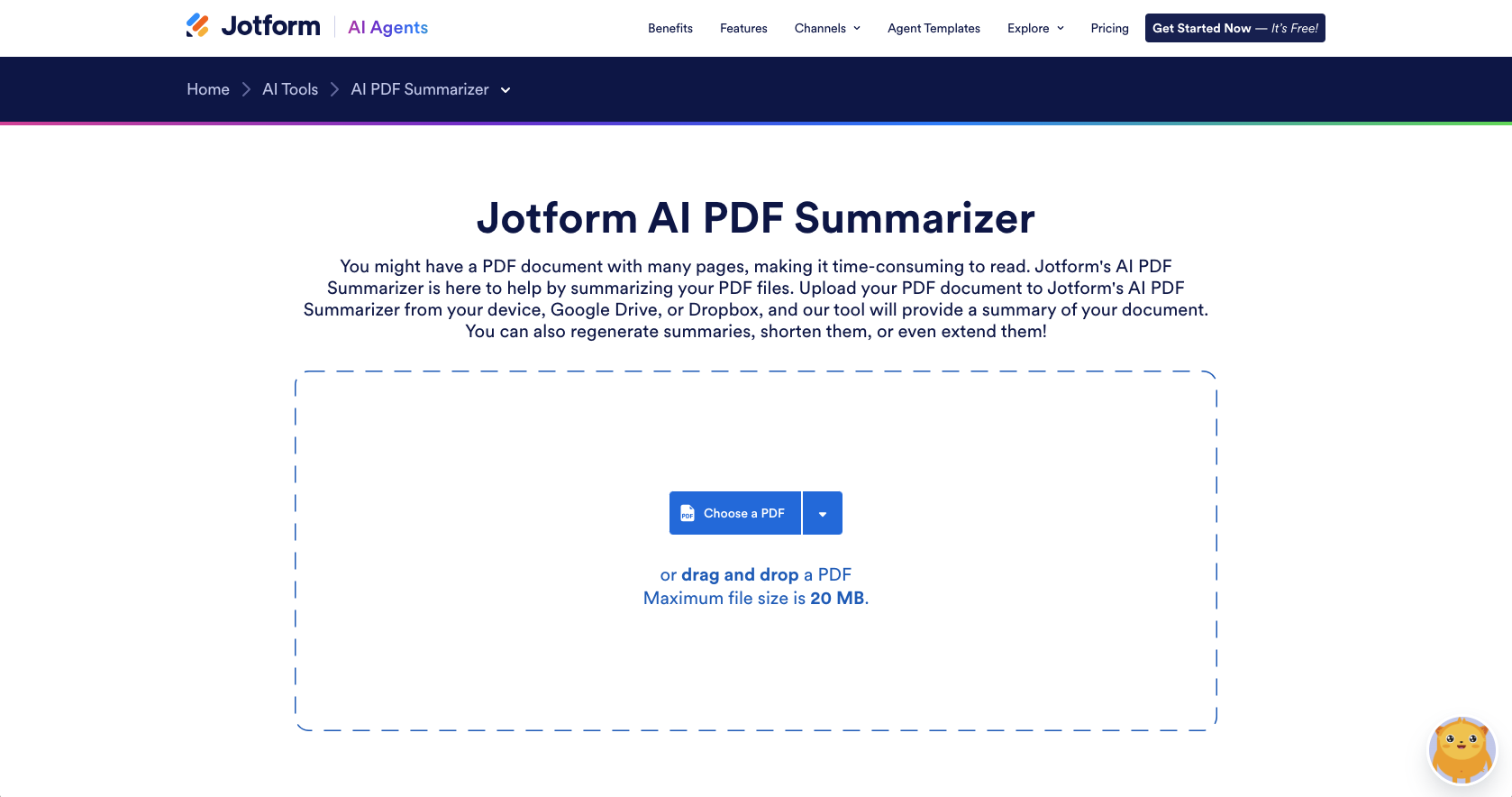





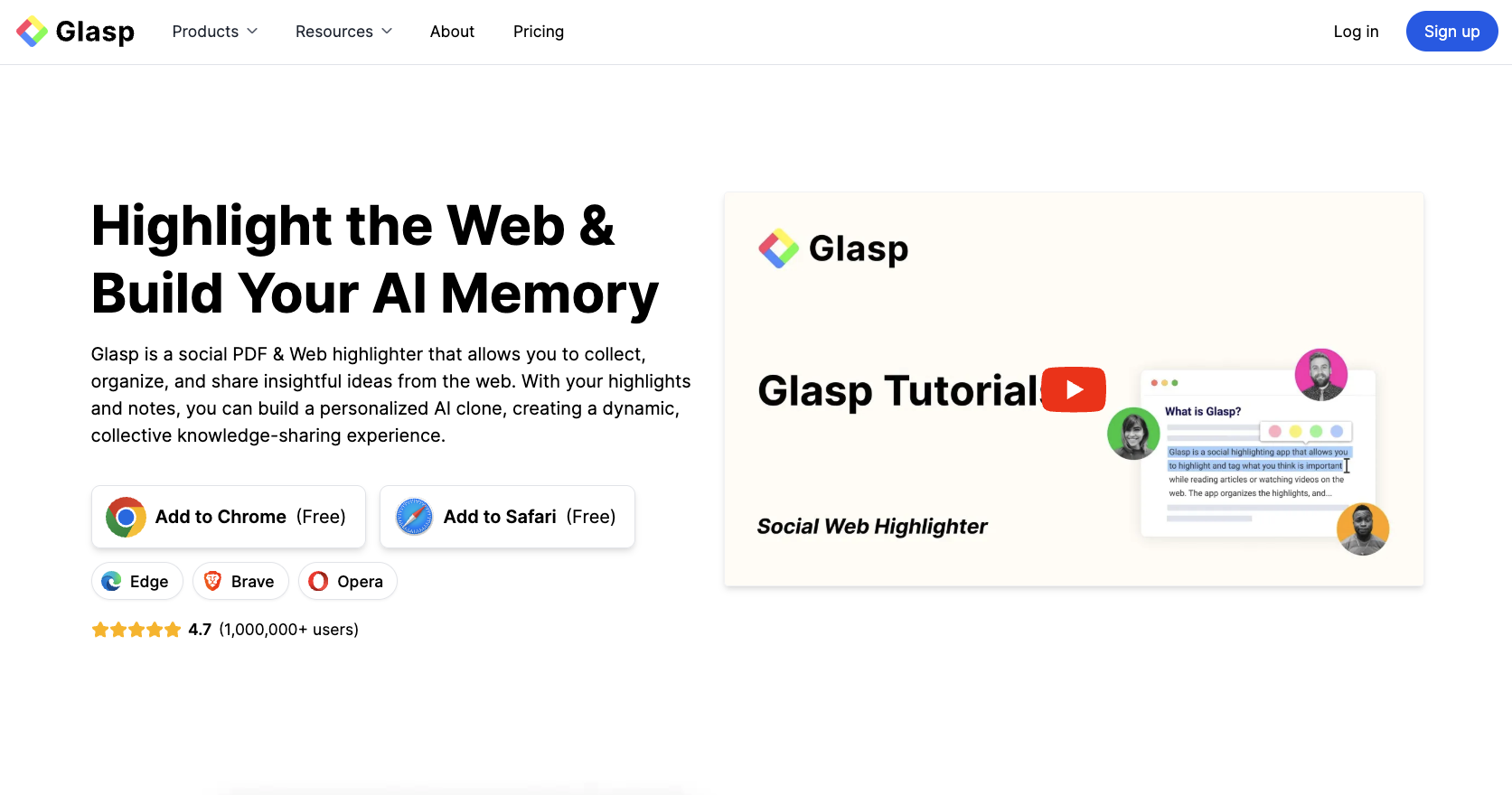



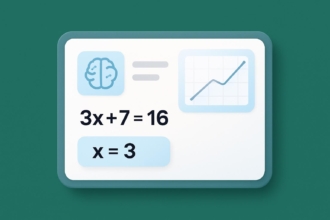
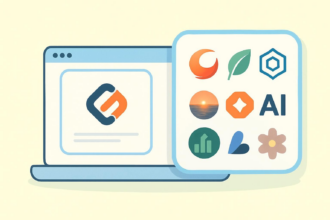



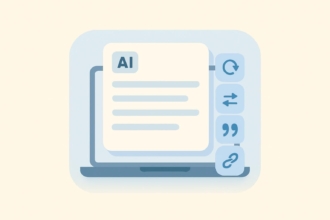























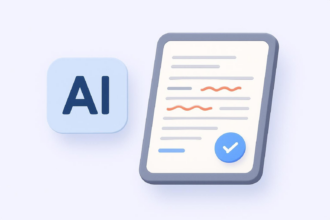






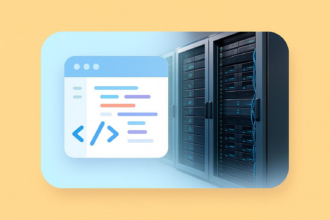

































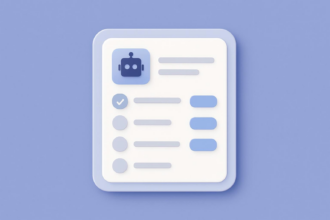




























Send Comment: